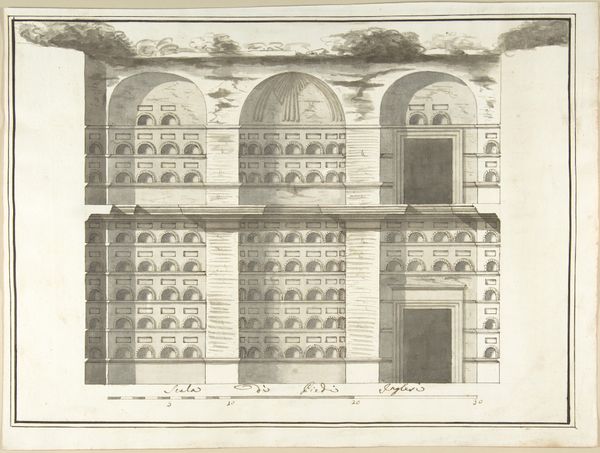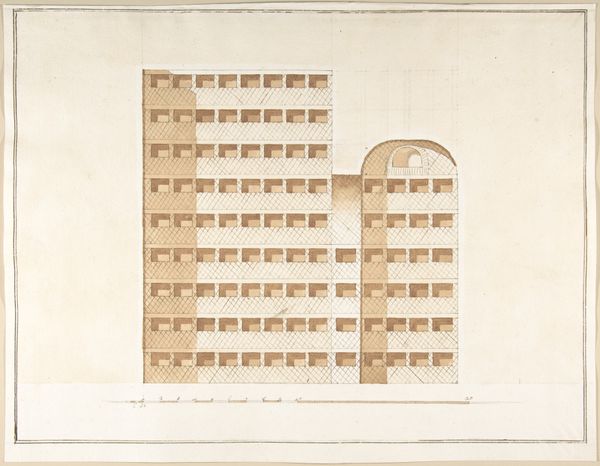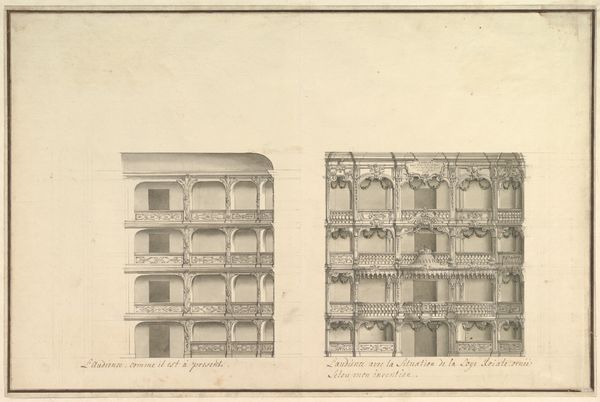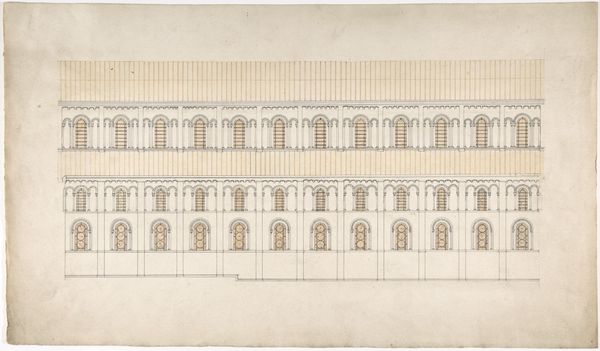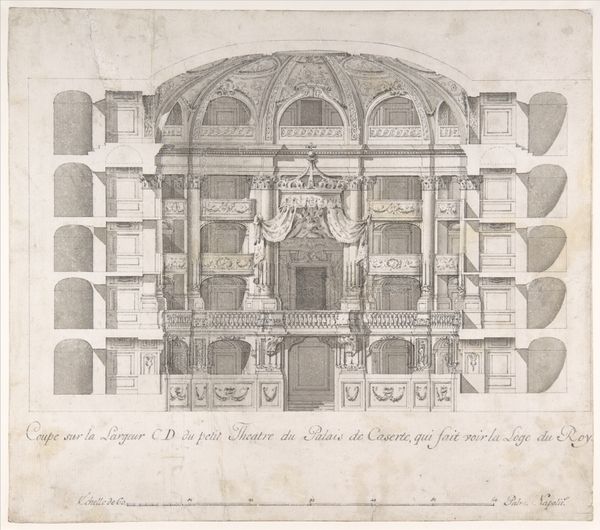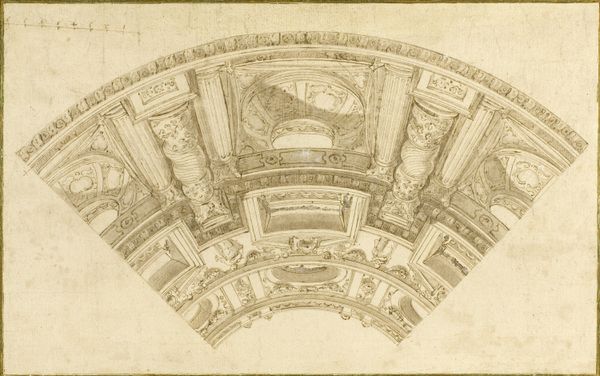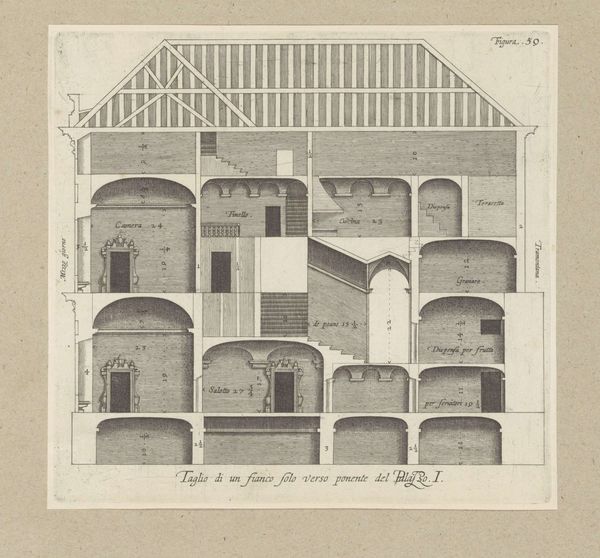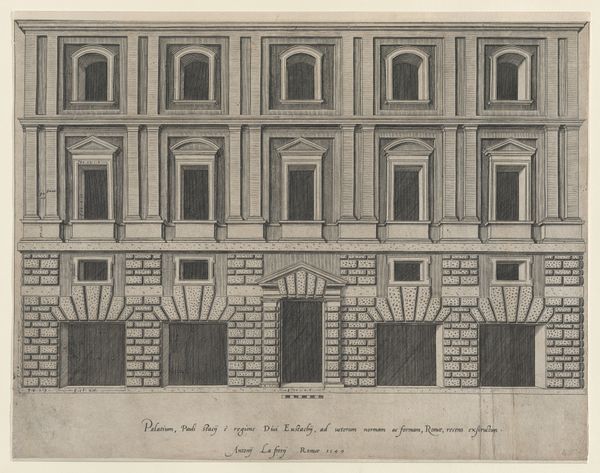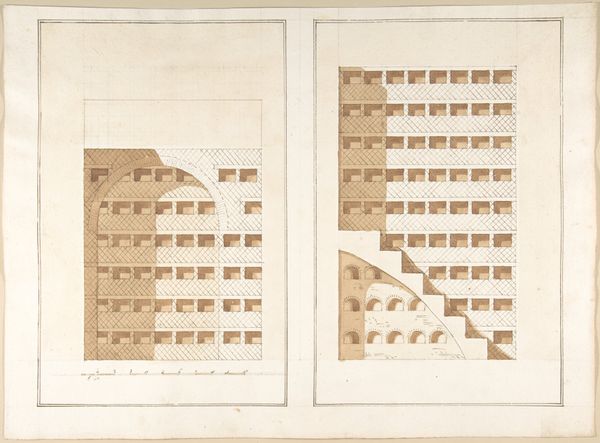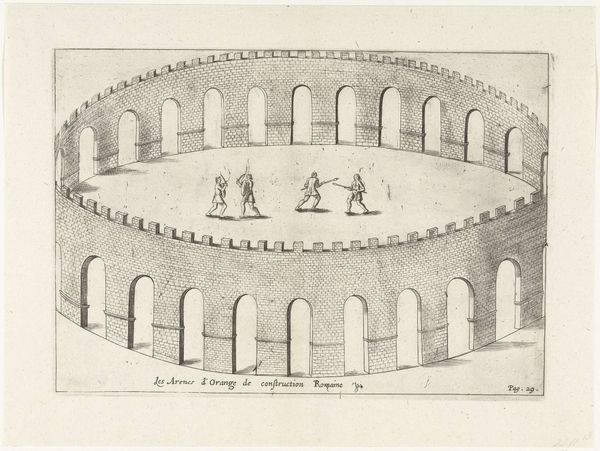
Elevation of a Columbarium 1710 - 1727
0:00
0:00
drawing, print, ink, pen, architecture
#
drawing
# print
#
landscape
#
form
#
romanesque
#
ink
#
geometric
#
arch
#
line
#
pen
#
academic-art
#
architecture
Dimensions: 13-3/16 x 17-11/16 in. (33.5 x 44.9 cm)
Copyright: Public Domain
Curator: This is Pietro Paolo Coccetti’s "Elevation of a Columbarium," a drawing likely created between 1710 and 1727. The piece resides at the Metropolitan Museum of Art. What strikes you first about it? Editor: The immediate impression is one of relentless order. The repetition of the niches, the almost mathematical precision, feels…oppressive in a strange way. Curator: Oppressive how? The form, its sheer repetition, is quite remarkable, but how does that relate to its likely purpose or the social contexts of columbariums? Editor: Consider the repetitive labor involved in producing such a detailed drawing. Coccetti employs pen and brown ink, focusing on linear precision, the formal architecture takes center stage; this suggests that this piece was intended to present an architectural design to potential patrons. It demonstrates expertise in drafting and design which was a service available on the market. Curator: Precisely. So, less about death then, and more about… market exchange? The consumption of skilled labor? Editor: It highlights a commodified afterlife. Each niche represents a purchase, a space within this rigidly organized structure. The visual language speaks of societal stratification, the ordered arrangements, as much as it evokes feelings about mortality. Curator: But doesn’t the line work itself convey something? Coccetti's hand, moving across the paper, creating each individual cell…that's where the labor and the artistry become inextricably linked. Each line signifies the making of the afterlife for those who could afford it. Editor: A vital point! Looking again, I’m drawn to the composition’s delicate balance. It's not merely a cold architectural plan; there’s a sensitivity in the line work that elevates it, transcends the piece’s explicit goal to memorialize. There is beauty in the precision of design. Curator: Absolutely. By analyzing it we recognize a convergence between function and form, connecting historical context with the immediate visual experience. Editor: Indeed, we move from funerary design to consider notions about labor, class, and, ultimately, the human urge to control and commemorate, rendered with grace and rigor.
Comments
No comments
Be the first to comment and join the conversation on the ultimate creative platform.

